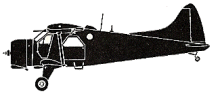
ASN Wikibase Occurrence # 217971
This information is added by users of ASN. Neither ASN nor the Flight Safety Foundation are responsible for the completeness or correctness of this information.
If you feel this information is incomplete or incorrect, you can submit corrected information.
| Date: | Tuesday 10 November 1987 |
| Time: | 10:30 |
| Type: |  de Havilland Canada DHC-2 Beaver |
| Owner/operator: | |
| Registration: | VH-IMJ |
| MSN: | 1462 |
| Year of manufacture: | 1974 |
| Fatalities: | Fatalities: 0 / Occupants: 1 |
| Aircraft damage: | Substantial |
| Location: | Furracabad Station, NSW -
 Australia Australia
|
| Phase: | Take off |
| Nature: | Agricultural |
| Departure airport: | Furracabad Station, NSW |
| Furracabad Station, NSW | |
| Investigating agency: | BASI |
| Confidence Rating: |
The aircraft was spreading Mexican Sulphur, a mixture of sulphur and a carrier base. Operations were being conducted from a one-way strip in a 2 to 3 knot tailwind, and an appropriate reduction in payload had been made by the pilot commensurate with the conditions. It was reported that operations had proceeded slowly as the spreading medium would not flow freely, tending to clog in the clamshell gate. This required the pilot to work the gate continuously to achieve an even discharge. A witness reported that during the sixth takeoff of the day, a strong wind gust substantially increased the tailwind. The aircraft did not become airborne, and the pilot pulled the hopper handle in an attempt to reduce the weight of the aircraft in order to clear a boundary fence. The load failed to dump normally. The pilot then selected additional flap and the aircraft became airborne in a tail-low attitude. Although the main wheels cleared the fence, the tail wheel struck a fence post. The aircraft remained airborne, but the pilot found it necessary to hold the control column in the fully-forward position. After some altitude was gained, the pilot made a further and successful attempt to dump the load. Although difficulty was experienced in controlling the aircraft, a safe landing was made at another aerodrome nearby. The aircraft sustained substantial damage to the rear fuselage and empennage. Empennage damage included buckling of the tailplane and rudder trailing edge. It was also found that spreading medium had clogged the hopper gate, preventing emergency dumping of the payload, and the hopper gate mirror was incorrectly aligned so that the pilot was unable to observe load release. This accident was not the subject of an on-site investigation.
Accident investigation:
 |
|
Sources:
https://www.atsb.gov.au/publications/investigation_reports/1987/aair/aair198702438/
https://www.atsb.gov.au/media/27684/aair198702438.pdf
Revision history:
| Date/time | Contributor | Updates |
|---|---|---|
| 17-Nov-2018 08:16 | Pineapple | Added |
Corrections or additions? ... Edit this accident description
The Aviation Safety Network is an exclusive service provided by:


 ©2024 Flight Safety Foundation
©2024 Flight Safety Foundation